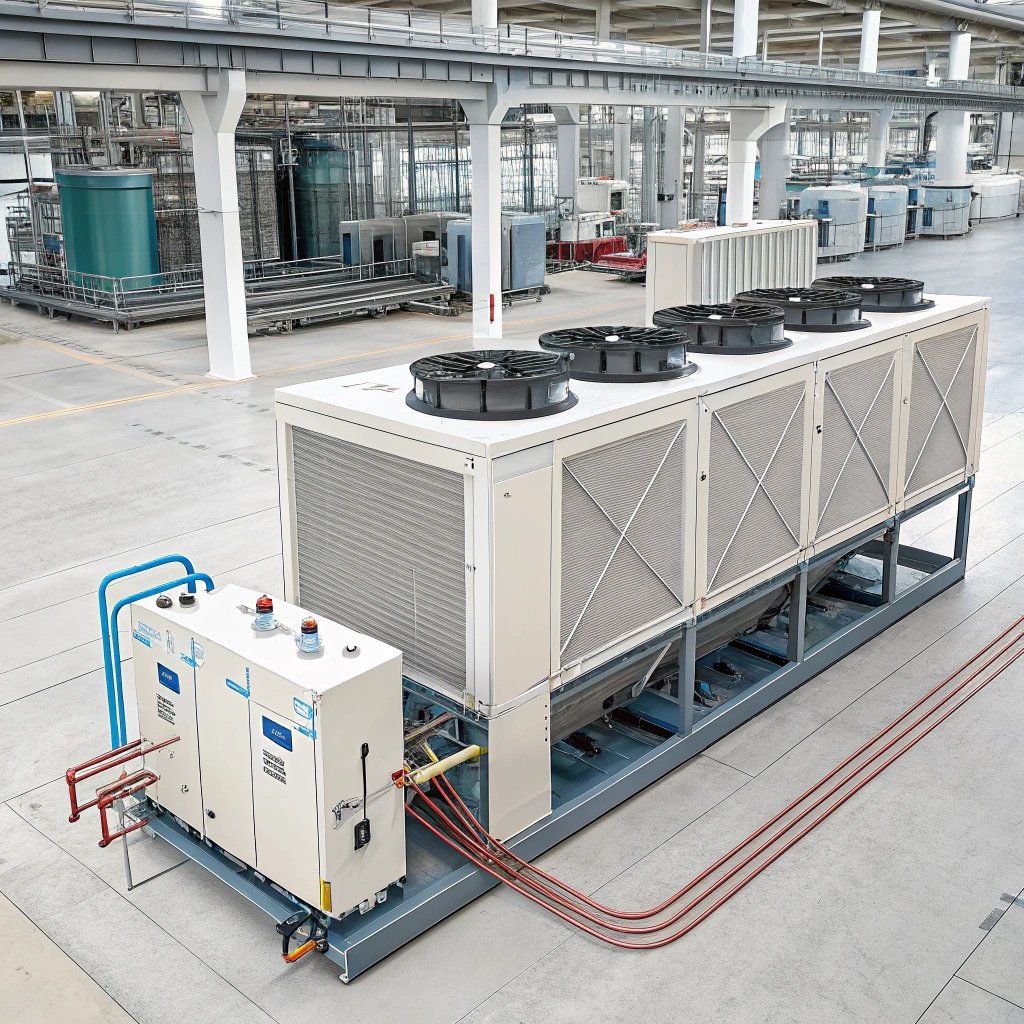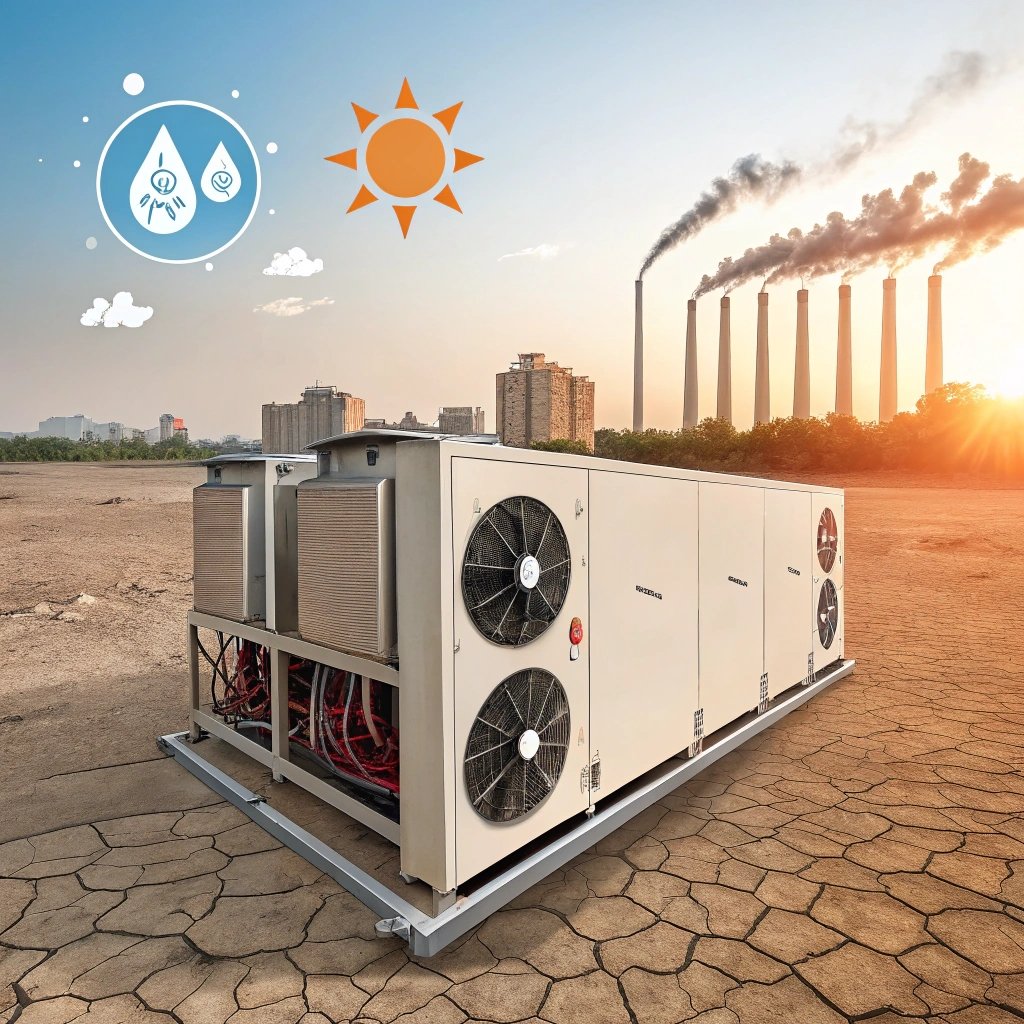Which are the common problems with water-cooled chillers?

A water-cooled chiller can be a reliable solution for many industries, but recurring issues may disrupt operations. These problems often increase downtime and affect overall efficiency.
Common problems with water-cooled chillers include poor water quality, insufficient maintenance, and system inefficiencies caused by incorrect installation or operation. Addressing these challenges ensures better performance and longevity.
Understanding the root causes and preventive measures is key to avoiding these common pitfalls. Let’s dive deeper into each issue.
Why is water quality a frequent problem?
Poor water quality leads to scaling, corrosion, and biofouling in the chiller system, reducing efficiency and increasing maintenance costs.
To prevent water quality issues, regular water treatment and filtration systems are essential. These measures minimize impurities and extend equipment lifespan.

Water-cooled chillers use a constant water flow for cooling, which can accumulate impurities over time. These impurities cause scaling on heat exchanger surfaces, lowering thermal transfer efficiency. Corrosion can damage pipes, leading to leaks, while biofouling—a buildup of microorganisms—can clog the system.
How to Improve Water Quality?
- Install a filtration system: A good filtration system can remove particulate matter and prevent blockages.
- Use chemical treatments: Anti-corrosion agents and scale inhibitors can protect your system from damage.
- Conduct regular water analysis: Regular testing helps monitor the water's pH, hardness, and other parameters, ensuring appropriate adjustments.
- Consider reverse osmosis systems: Advanced water treatment can remove dissolved minerals, reducing scaling risks.
Addressing water quality early can save significant repair costs and extend the life of your chiller.
Is insufficient maintenance a cause for concern?
Neglecting maintenance can lead to system inefficiencies, equipment breakdowns, and costly downtime. This is one of the most common issues with water-cooled chillers.
Regular maintenance schedules prevent unexpected failures and keep chillers running efficiently, reducing energy costs and prolonging lifespan.

Without proper care, components such as compressors, pumps, and heat exchangers can wear out faster. Dirt accumulation on condenser tubes or improper lubrication of moving parts can severely impact performance.
What Should Regular Maintenance Include?
- Tube cleaning: Remove debris and scaling from heat exchanger tubes.
- Inspection of seals and valves: Check for leaks or wear.
- Lubrication of moving parts: Ensure all bearings and rotating parts operate smoothly.
- Check electrical systems: Inspect wiring and connections to avoid short circuits.
- Monitor performance data: Analyze temperature, pressure, and flow rates to identify inefficiencies early.
Following these steps can improve system reliability and reduce operational costs over time.
How does incorrect installation or operation impact chillers?
Improper installation or incorrect usage often leads to underperformance or frequent malfunctions in water-cooled chillers.
Ensuring proper installation and operator training can avoid system inefficiencies and frequent troubleshooting needs.

Incorrect installation may involve poorly designed piping systems, inadequate ventilation, or misaligned components. Operational errors, such as running the system beyond its designed capacity, can overburden the equipment and lead to breakdowns.
Common Installation and Operational Issues
| Issue | Effect | Solution |
|---|---|---|
| Incorrect piping layout | Reduced flow or water hammer | Follow manufacturer recommendations |
| Poor airflow management | Reduced cooling efficiency | Maintain clear airflow pathways |
| Overloading the system | Premature component wear | Match load with system capacity |
| Untrained operators | Frequent errors and inefficiencies | Provide proper training sessions |
Collaborating with experienced installers and providing comprehensive training for operators ensures that the system is set up for success from day one.
Conclusion
Addressing common water-cooled chiller problems like water quality, maintenance, and installation issues can significantly enhance performance and reliability.
Insights: Proactive management, including routine checks and proper training, is critical to avoiding costly breakdowns and extending the life of your water-cooled chiller.




